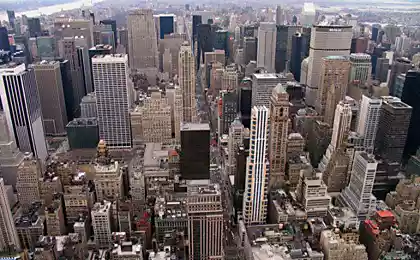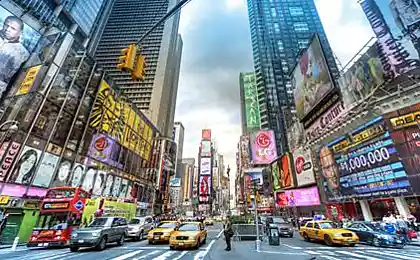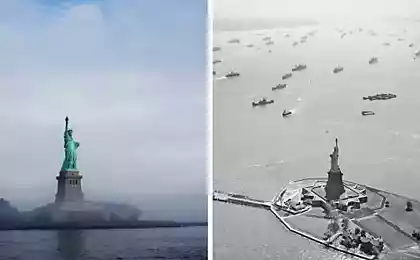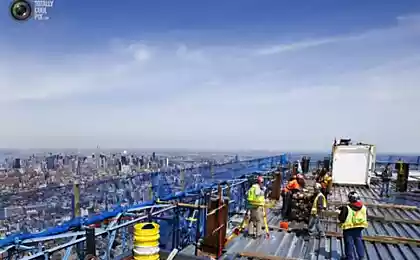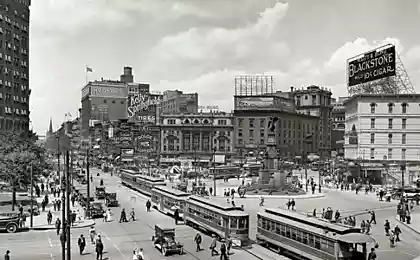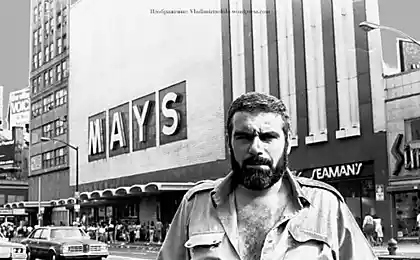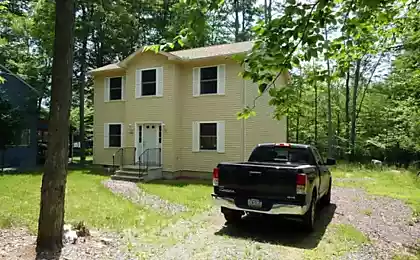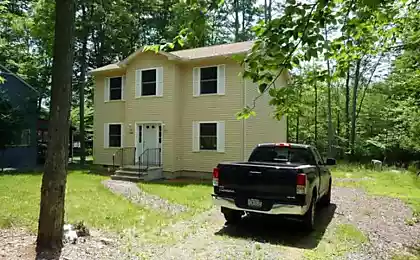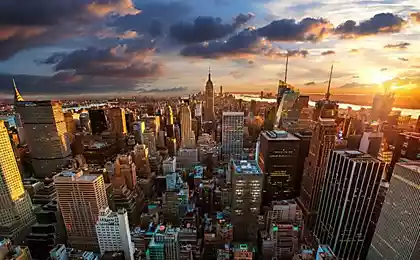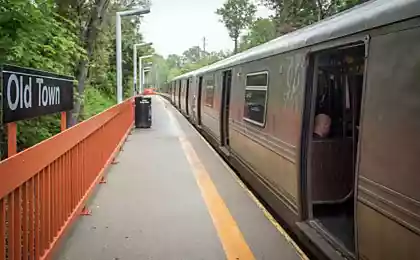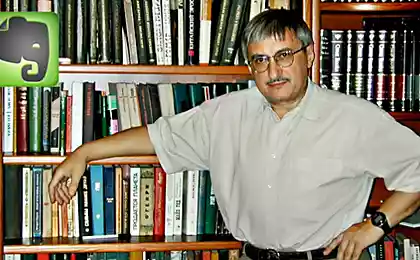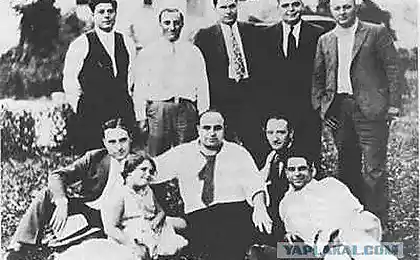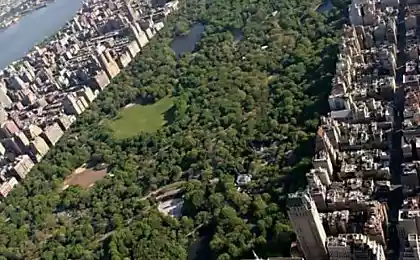1143
House in Brooklyn
On one of the streets of Brooklyn Heights is quite ordinary-looking house that does not stand out from the rest. However, if you look closely, it immediately becomes clear that it is something wrong.
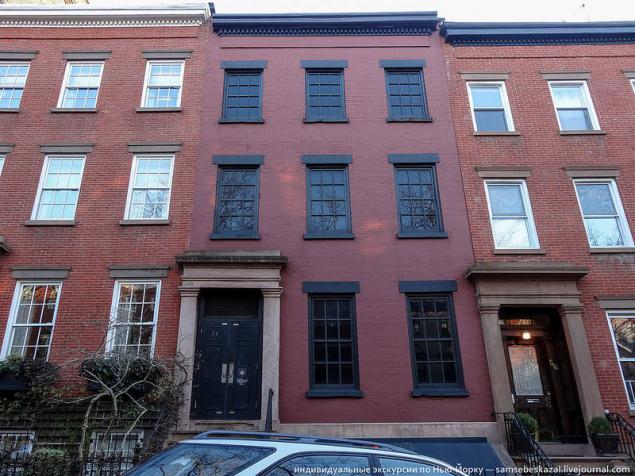
By 1907, the New York transport crisis was brewing. Population spilled outside of Manhattan and Brooklyn Bridge, just could not cope with the crowds wanting to move from one side of the East River on the other. Just look at the statistics to realize the extent of his workload. 1907 became just the peak. According to the data, in 1907, an average of the Brooklyn Bridge used 426,000 people every day. The majority went through it on foot or rode public transportation. For comparison, in 2009, every day they enjoyed an average of about 150 000 people. This is almost 2.5 times lower than in the 100 years before that.
The crowd at the Brooklyn Bridge.
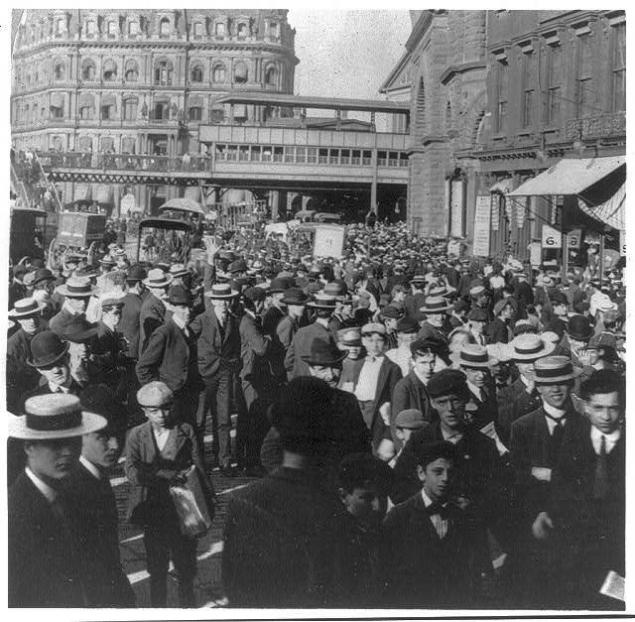
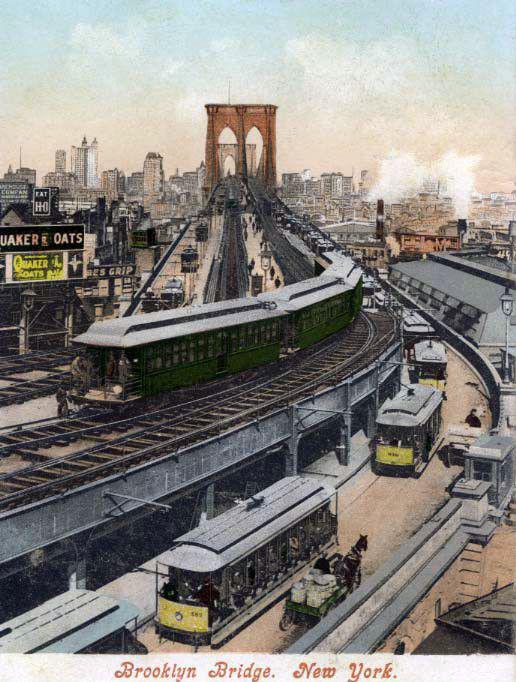
In 1904, the city had the first subway branch line built by IRT and is connected to City Hall and 145th Street. According to the contract with the city, the company had to expand the branch in Brooklyn side, and towards the Bronx. In order to pave the way to Brooklyn, had to overcome a water barrier in the form of the East River. Choosing between the bridge and the tunnel stopped on the last option, because he was cheaper. As a result, it developed a project worth 8 million. Dollars for laying two parallel tunnels of 661 meters. The line was to link the City Hall and the lower Manhattan from Brooklyn Flatbush area and the railway station on Atlantic Avenue.
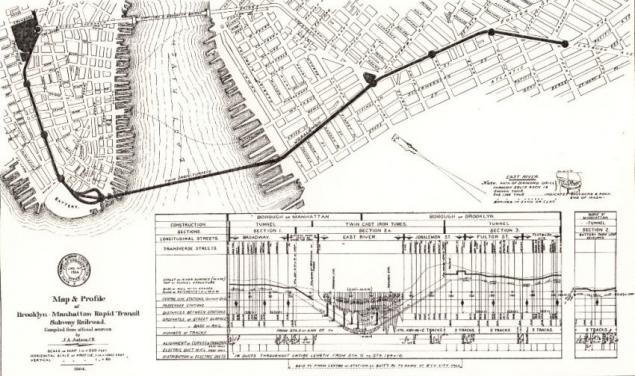
Construction began in 1903. There were no difficulties and adventures. The soil at the site of the gasket has been uneven and water saturation, so we had to use a tunneling shield from the caisson. Shield (in this case it's just a wooden structure protected the tunnel from collapsing) moving at a snail's speed while workers manually select the ground and strengthen the walls of the tunnel with the help of iron rings. In a closed space behind it pumped air pressure that pushes the groundwater and protected slaughter. It was effective, but it is quite dangerous for the health of workers who may be ill with decompression sickness. One day in 1905, the air, finding a weak point under the arch of the tunnel began to struggle through the surface layer of the soil and water. In such cases, finding the leak, work had to shut her up with sandbags and clay, and from above, from the barge, to this place threw off tons of sand. The location was easily identified by the depth of the water coming from air bubbles. At this time, the pressure was so great that the hole is growing rapidly in size and when it ran a work he sucked it with bags. Poor guy dragged through the soil, through the water like a cork and champagne thrown onto the surface of the East River, where he picked up the boat sailed past. To everyone's amazement, the worker escaped with only slight shock and a few scratches. In 1907 the construction of two tunnels was finally completed.

All sources indicate that the tunnel Dzhoralemon Street (Russian name is taken in Google, in English pronounced as «JOR-le-mon») is the oldest underwater tunnel in New York. This is not entirely true. He is the first commissioned. The oldest is a Steinway tunnel-Belmont, whose construction began in 1892. William Steinway, Steinway had planned to join the Village (a town built for the workers of his factory in Queens) from Manhattan. The tunnel had to undergo a tram line. But the death of Steinway construction was halted. Finish the job was only in 1907, when the tunnel financier August Belmont bought, but he had a problem. The tunnel was reconstructed for use by trams, Belmont but failed to obtain a license and the tunnel stood until 1913, when he again changed hands, which was the city of New York. The tunnel was renovated again, this time for the electric company and IRT in 1915 on it was the first part. Now it trains for Line 7 New York sabveya. The second competitor was Hudson pipe - system of railway tunnels connected the Manhattan and New Jersey, and laid, it is not difficult to guess, under the Hudson River. In 1906 was completed Uptown Hudson Tubes, but delayed delivery of the object and the first train went through it only in February 1908, almost two months after the opening of the tunnel Dzhoralemon Street. So that if it were not for the sudden death of Steinway or delays Hudson pipe Dzhoralemonu not be the first.
The world's first underwater tunnel was laid in London Thames Tunnel under the Thames in the 1825-1843 biennium by the first tunnel shield. This was the most present engineering marvel. First laid under water in the US was a railway tunnel St. Clair, joined the staff of Michigan and the Canadian province of Ontario. It was opened in 1890
Like many other streets of Brooklyn, Dzhoralemon Street is named after the landowner Tiyunisa Dzhoralemona on whose land it once was built. Dzhoralemon was a harness and saddle manufacturer from New Jersey. In 1803 he bought a plot of land in Brooklyn Heights and moved there to live, built himself a large and spacious house with a view of Manhattan. Interestingly, in his time, he was strongly against the construction of city streets on the territory belonging to him, but it was thanks to one of them, he, in the end, and went down in history.
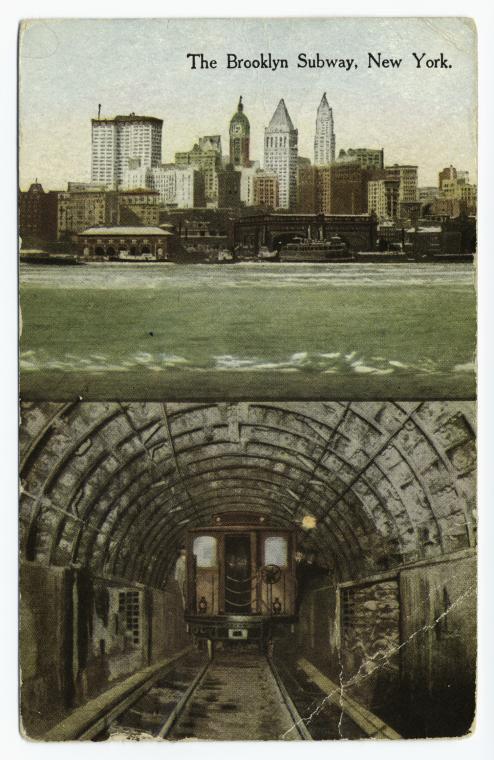
Initially, the tunnel named Brooklyn Battery, Brooklyn or tunnel under the East River. Then similar facilities in New York, had become more and more specific title, tying him to the street by which he passes.
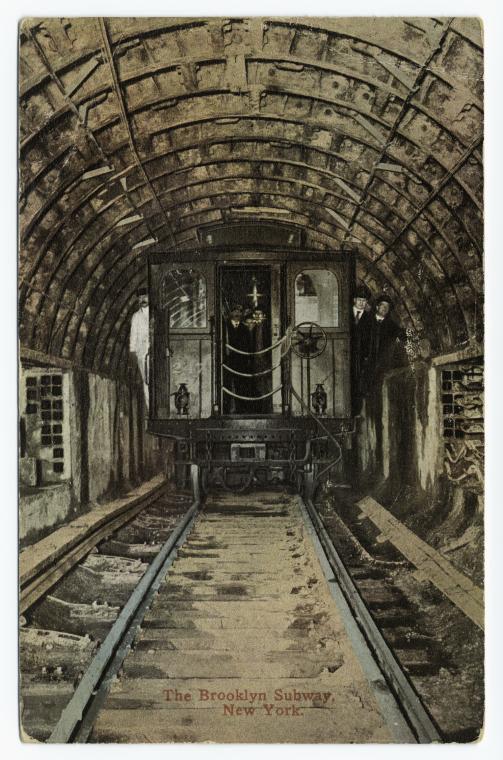
One of his assistants to the construction work of a young engineer Clifford Holland only began his professional career. It will take a few years and it will become the chief engineer of the world's first road tunnel, which will connect the coast of New York and New Jersey, and who later would be called by his name.
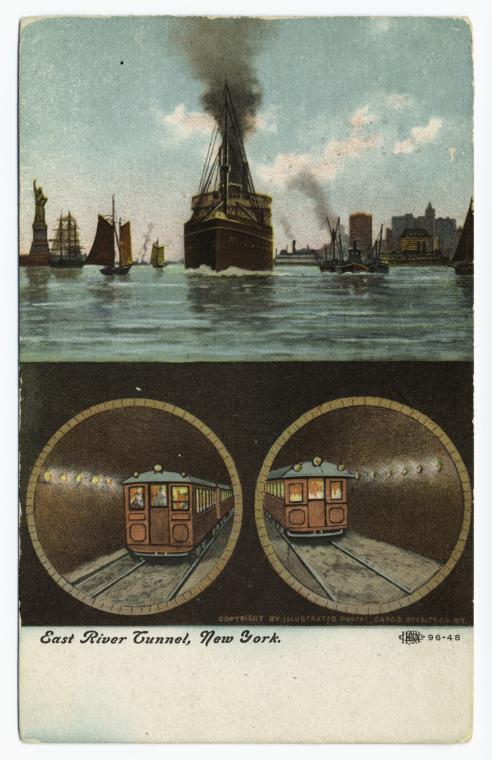
The project envisaged arrangement of the ventilation shaft on the Brooklyn side of the tunnel. To this end, the company IRT had to buy a residential house built in 1847, standing near the water just above the tunnel. He was seated, and the internal walls and floors were destroyed. Windows were replaced on the grid. Inside have arranged a technical descent to the tunnel and installed ventilation equipment.
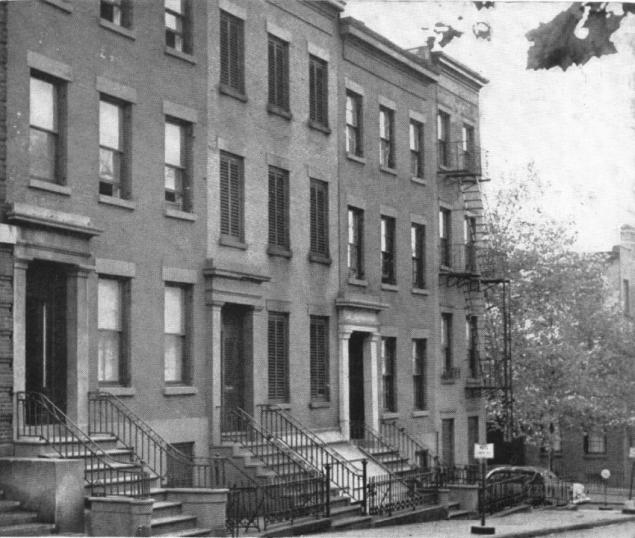
Until 1999, the house was in such a form until it was decided to bring it more civilized. Grates replaced with windows, where instead of glass plates used black Lexan - the material of high polycarbonate resin which is used when the "strength considerations take precedence over considerations of cost." For the comfort of neighbors ventilation system carried on the roof of the building and now the building looks almost like neighbors. Almost.
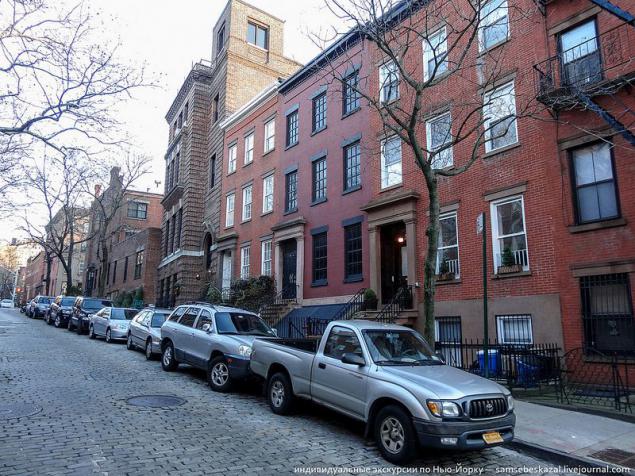
Source: samsebeskazal.livejournal.com

By 1907, the New York transport crisis was brewing. Population spilled outside of Manhattan and Brooklyn Bridge, just could not cope with the crowds wanting to move from one side of the East River on the other. Just look at the statistics to realize the extent of his workload. 1907 became just the peak. According to the data, in 1907, an average of the Brooklyn Bridge used 426,000 people every day. The majority went through it on foot or rode public transportation. For comparison, in 2009, every day they enjoyed an average of about 150 000 people. This is almost 2.5 times lower than in the 100 years before that.
The crowd at the Brooklyn Bridge.


In 1904, the city had the first subway branch line built by IRT and is connected to City Hall and 145th Street. According to the contract with the city, the company had to expand the branch in Brooklyn side, and towards the Bronx. In order to pave the way to Brooklyn, had to overcome a water barrier in the form of the East River. Choosing between the bridge and the tunnel stopped on the last option, because he was cheaper. As a result, it developed a project worth 8 million. Dollars for laying two parallel tunnels of 661 meters. The line was to link the City Hall and the lower Manhattan from Brooklyn Flatbush area and the railway station on Atlantic Avenue.

Construction began in 1903. There were no difficulties and adventures. The soil at the site of the gasket has been uneven and water saturation, so we had to use a tunneling shield from the caisson. Shield (in this case it's just a wooden structure protected the tunnel from collapsing) moving at a snail's speed while workers manually select the ground and strengthen the walls of the tunnel with the help of iron rings. In a closed space behind it pumped air pressure that pushes the groundwater and protected slaughter. It was effective, but it is quite dangerous for the health of workers who may be ill with decompression sickness. One day in 1905, the air, finding a weak point under the arch of the tunnel began to struggle through the surface layer of the soil and water. In such cases, finding the leak, work had to shut her up with sandbags and clay, and from above, from the barge, to this place threw off tons of sand. The location was easily identified by the depth of the water coming from air bubbles. At this time, the pressure was so great that the hole is growing rapidly in size and when it ran a work he sucked it with bags. Poor guy dragged through the soil, through the water like a cork and champagne thrown onto the surface of the East River, where he picked up the boat sailed past. To everyone's amazement, the worker escaped with only slight shock and a few scratches. In 1907 the construction of two tunnels was finally completed.

All sources indicate that the tunnel Dzhoralemon Street (Russian name is taken in Google, in English pronounced as «JOR-le-mon») is the oldest underwater tunnel in New York. This is not entirely true. He is the first commissioned. The oldest is a Steinway tunnel-Belmont, whose construction began in 1892. William Steinway, Steinway had planned to join the Village (a town built for the workers of his factory in Queens) from Manhattan. The tunnel had to undergo a tram line. But the death of Steinway construction was halted. Finish the job was only in 1907, when the tunnel financier August Belmont bought, but he had a problem. The tunnel was reconstructed for use by trams, Belmont but failed to obtain a license and the tunnel stood until 1913, when he again changed hands, which was the city of New York. The tunnel was renovated again, this time for the electric company and IRT in 1915 on it was the first part. Now it trains for Line 7 New York sabveya. The second competitor was Hudson pipe - system of railway tunnels connected the Manhattan and New Jersey, and laid, it is not difficult to guess, under the Hudson River. In 1906 was completed Uptown Hudson Tubes, but delayed delivery of the object and the first train went through it only in February 1908, almost two months after the opening of the tunnel Dzhoralemon Street. So that if it were not for the sudden death of Steinway or delays Hudson pipe Dzhoralemonu not be the first.
The world's first underwater tunnel was laid in London Thames Tunnel under the Thames in the 1825-1843 biennium by the first tunnel shield. This was the most present engineering marvel. First laid under water in the US was a railway tunnel St. Clair, joined the staff of Michigan and the Canadian province of Ontario. It was opened in 1890
Like many other streets of Brooklyn, Dzhoralemon Street is named after the landowner Tiyunisa Dzhoralemona on whose land it once was built. Dzhoralemon was a harness and saddle manufacturer from New Jersey. In 1803 he bought a plot of land in Brooklyn Heights and moved there to live, built himself a large and spacious house with a view of Manhattan. Interestingly, in his time, he was strongly against the construction of city streets on the territory belonging to him, but it was thanks to one of them, he, in the end, and went down in history.

Initially, the tunnel named Brooklyn Battery, Brooklyn or tunnel under the East River. Then similar facilities in New York, had become more and more specific title, tying him to the street by which he passes.

One of his assistants to the construction work of a young engineer Clifford Holland only began his professional career. It will take a few years and it will become the chief engineer of the world's first road tunnel, which will connect the coast of New York and New Jersey, and who later would be called by his name.

The project envisaged arrangement of the ventilation shaft on the Brooklyn side of the tunnel. To this end, the company IRT had to buy a residential house built in 1847, standing near the water just above the tunnel. He was seated, and the internal walls and floors were destroyed. Windows were replaced on the grid. Inside have arranged a technical descent to the tunnel and installed ventilation equipment.

Until 1999, the house was in such a form until it was decided to bring it more civilized. Grates replaced with windows, where instead of glass plates used black Lexan - the material of high polycarbonate resin which is used when the "strength considerations take precedence over considerations of cost." For the comfort of neighbors ventilation system carried on the roof of the building and now the building looks almost like neighbors. Almost.

Source: samsebeskazal.livejournal.com
